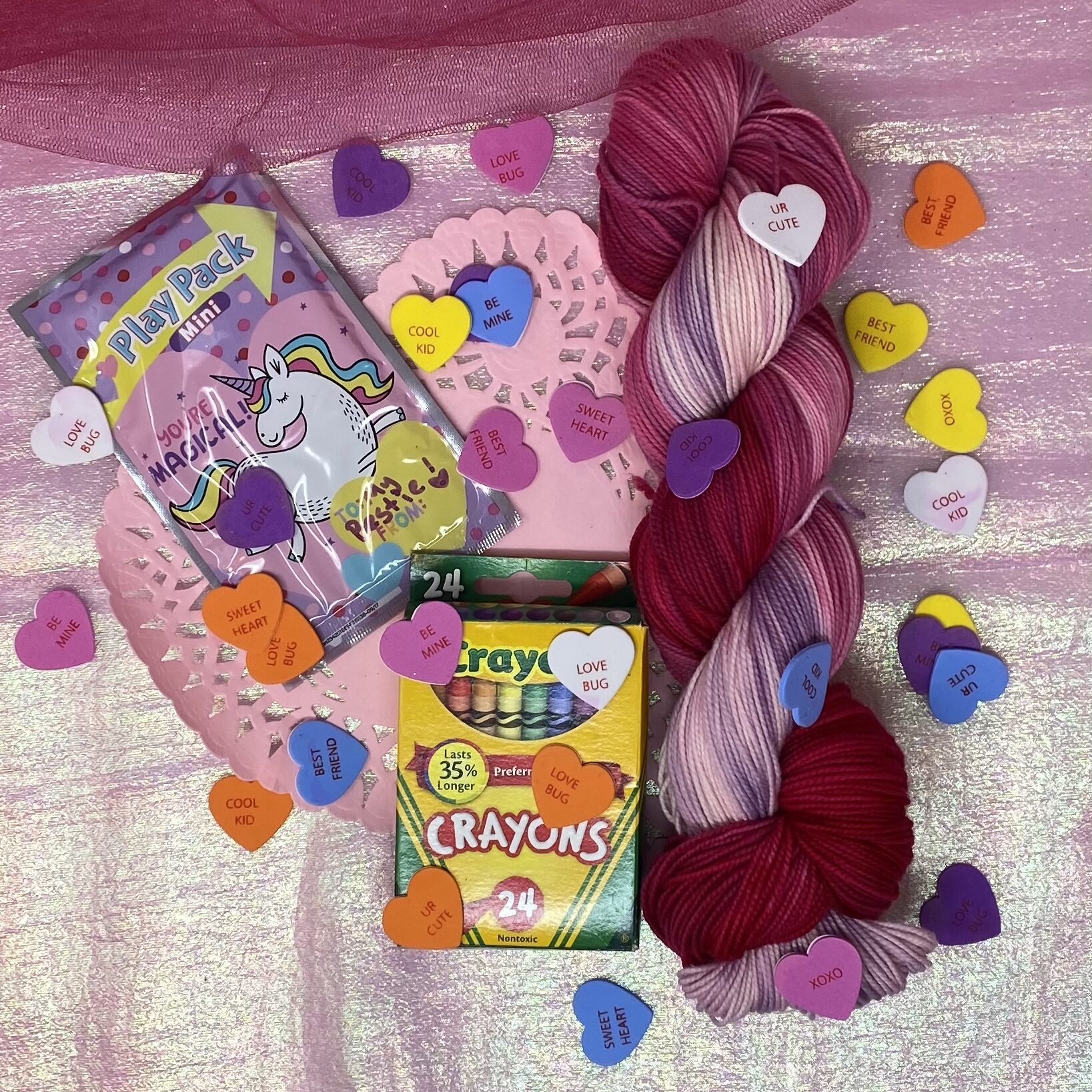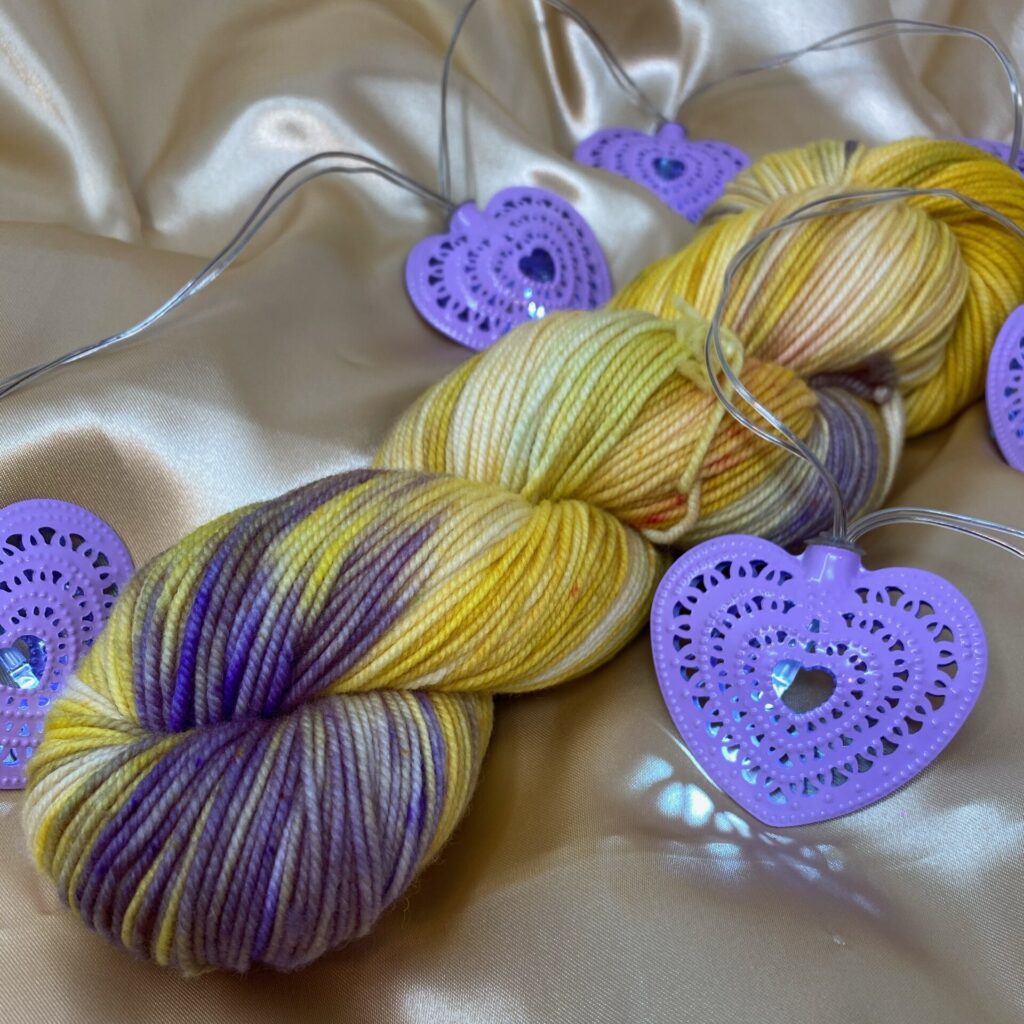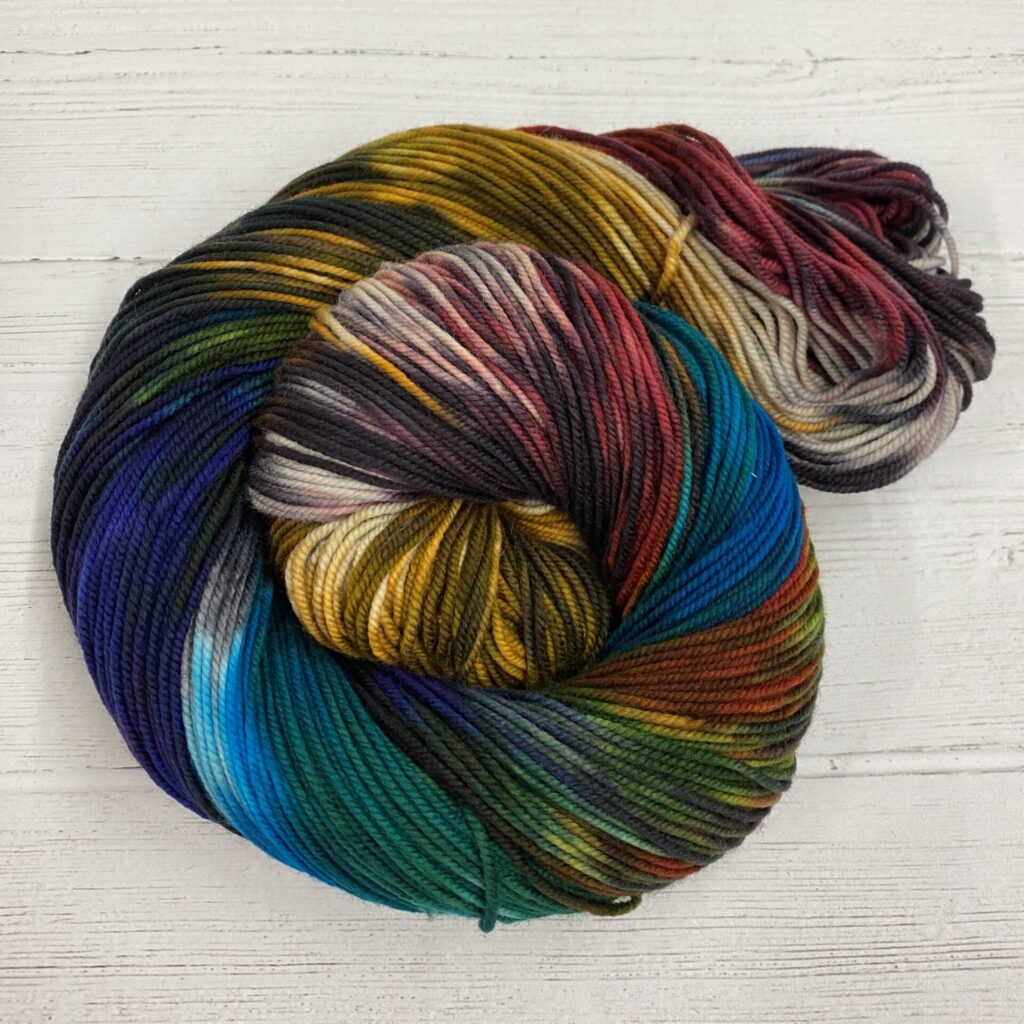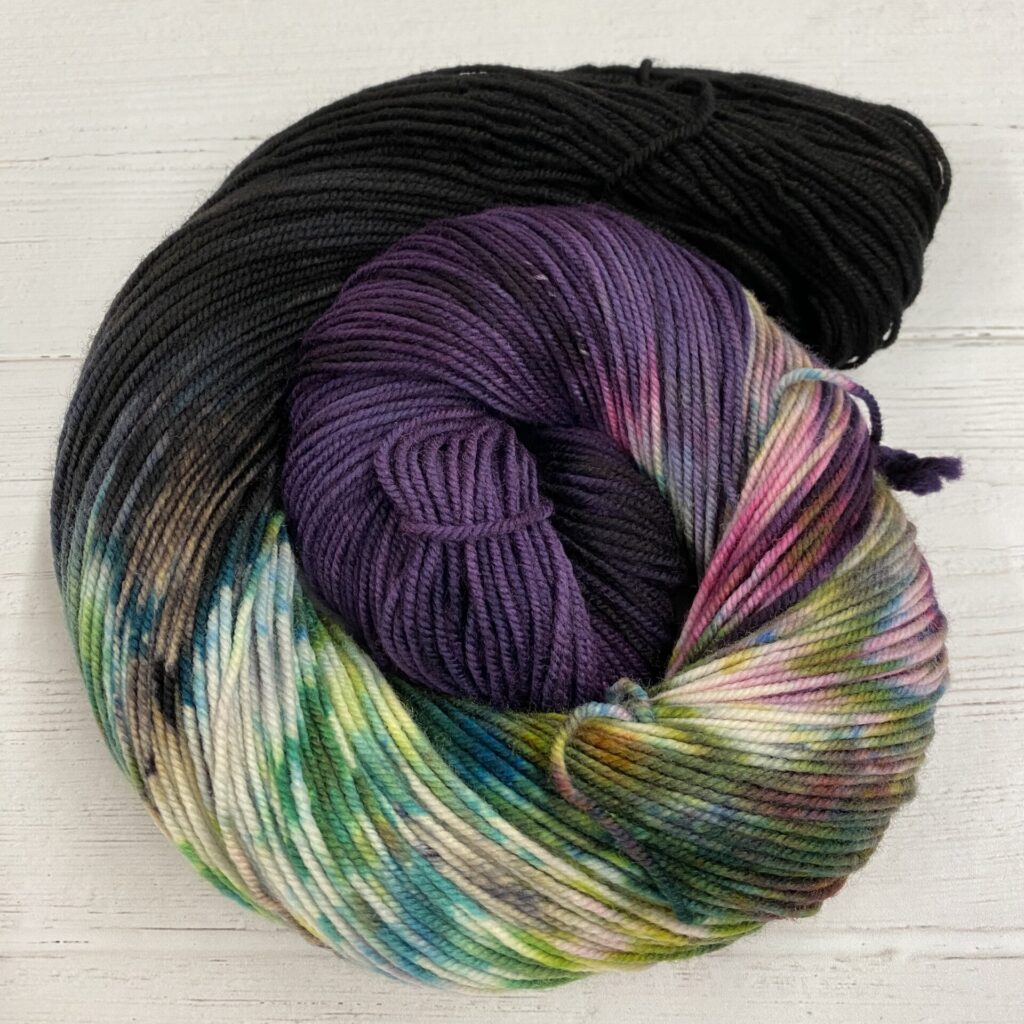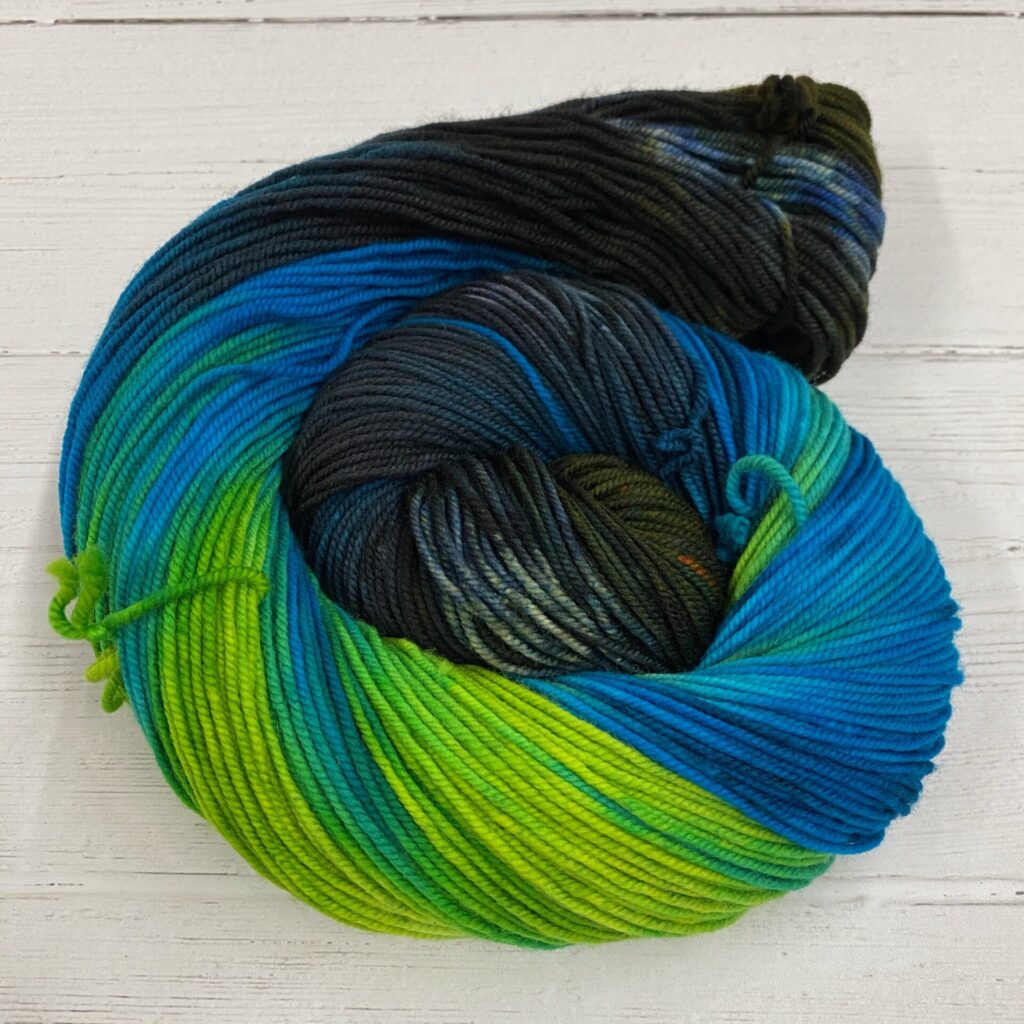Last Fall, we debuted a themed collection of colorways, designed to celebrate Fall, and we worked with a group of amazing designers that created gorgeous pieces to support this colorway collection (which was exclusively available through our LYS partners). For this collection, we put together a very Springy rainbow, and paired it with some of our 2020 Birds & Bees collection colorways. The result is a collection of fabulous Springy skeins that can be put together in so many amazing ways!
Check out our LYS partners in this Spring Collection:
- Casting On: https://casting-on.business.site/
- Haus of Yarn: https://www.hausofyarn.com/
- Knit Whits: https://www.knitwhitsyarnshop.com/#/
- Needles in the Haymarket: https://needlesinthehaymarket.com/
- Yarn Harbor https://yarnharborduluth.com/
We think the patterns we showcased with our Fall collection would ALSO be gorgeous with a Springtime update, and wanted y’all to have an easy way to see and access these patterns:
2 skein patterns include:
- Leafy Greens (https://shannonsquire.com/leafy-greens/) or
- Striae (https://shannonsquire.com/striae/) by Shannon Squire, and
- A Walk Through the Woods Cowl (https://justinechenel.com/a-walk-through-the-woods/) by Justine Chenel Quealy
3 (or more!) skein patterns include:
- Girls Just Wanna Have Fun (https://www.lovecrafts.com/en-us/p/girls-just-wanna-have-fun-knitting-pattern-by-afifa-knits-designs / https://www.knitcrate.com/collections/all/products/girls-just-wanna-have-fun) by Afifa Sayeed;
- Under the Cedars (https://www.lovecrafts.com/en-us/user/Makenzie-Alvarez/4d083d10-b724-4dbd-98dc-0e8096b332e4?page=2) by Makenzie Alvarez;
- Hilso Cowl (https://payhip.com/b/W2KQ) by Tressa Weidenaar,
- Deep Summer Cowl (https://www.sundaughterknits.com/product-page/deep-summer-cowl) by Sönna Schuttner; and
- What’s the Buzz Wrap (https://payhip.com/b/s7MV) by Alyssa Rasmussen
The colorways included in our Spring Collection are:

Variegated, from left to right: Lazuli Bunting, Red Nomad Bee, Purple Finch, Blanket Flower, Metallic Sweat Bee, Passionflower, Blue Orchard Bee, & Stellar Jay
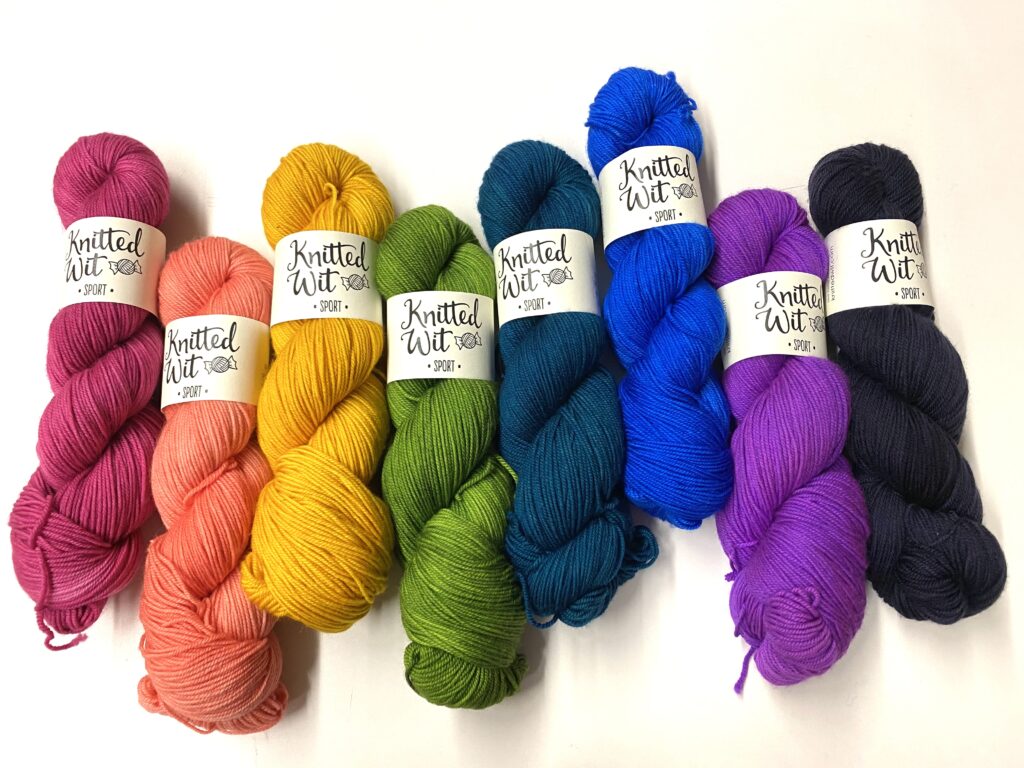
And solids from left to right: Raspberry Milkshake, Peachberry Sparkle, Pollen, Canopy, Carpenter Bee, Royal, Fox Glove, & Crow









